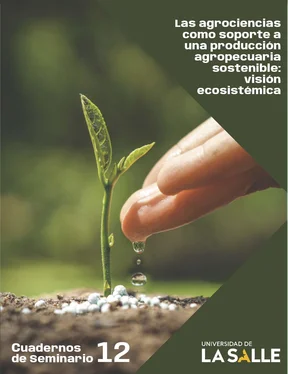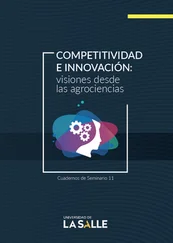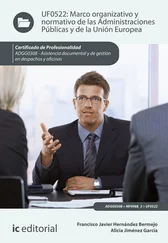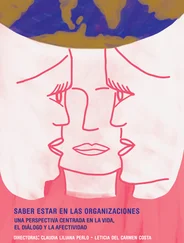La aplicación de la biorremediación en sitios reales contaminados demuestra su viabilidad en la recuperación y reutilización de áreas contaminadas, al recobrar el valor de los sitios y su reintegración a los ciclos ambientales y ciclos económicos de las localidades cercanas, para que, gracias a los casos de éxito, autoridades, gobiernos, empresas e instituciones implementen estas tecnologías en la restauración ambiental con beneficios a la sociedad.
Referencias
Abatenh, E., Gizaw, B., Tsegaye, Z. y Wassie, M. (2017). The role of microorganisms in bioremediation. A review. Open Journal of Environmental Biology, 2(1), 38-46.
Acuña, A. J., Pucci, O. H. y Pucci, G. N. (2012). Effect of nitrogen deficiency in the biodegradation of aliphatic and aromatic hydrocarbons in Patagonian contaminated soil. International Journal of Recent Research and Applied Studies, 11(3), 470-476.
Adams, G. O., Tawari-Fufeyin, P., Okoro, S. E. y Ehinomen, I. (2015). Bioremediation, biostimulation and bioaugmentation: a review. International Journal of Environmental Bioremediation & Biodegradation, 3, 28-39.
Al-Hawash, A. B., Dragh, M. A., Li, S., Alhujaily, A., Abbood, H. A., Zhang, X. y Ma, F. (2018). Principles of microbial degradation of petroleum hydrocarbons in the environment. The Egyptian Journal of Aquatic Research, 44, 71-76.
Aparicio, J. D., Raimondo, E. E., Gil, R. A., Benimeli, C. S. y Polti, M. A. (2018). Actinobacteria consortium as an efficient biotechnological tool for mixed polluted soil reclamation: Experimental factorial design for bioremediation process optimization, Journal of Hazardous Materials, 342, 408-417.
Arora, N. K. (2018). Bioremediation: a green approach for restoration of polluted ecosystems. Environmental Sustainability, 1, 305-307.
Chikere, C. B., Okpokwasili, G. C. y Chikere, B. O. (2011). Monitoring of microbial hydrocarbon remediation in the soil. Biotechnology, 1, 117-138.
Chinchilla, M., Alvarado, A. y Mata, R. (2011). Factores formadores y distribución de suelos de la subcuenca del río Pirrís, Talamanca, Costa Rica. Agronomía Costarricense, 35(1), 33-57.
Choi, S. D., Hong, H. B. y Chang, Y. S. (2003). Adsorption of halogenated aromatic pollutants by a protein released from Bacillus pumilus, Water Research, 37, 4004-4010.
Das, N. y Chandran, P. (2010). Microbial degradation of petroleum hydrocarbon contaminants: an overview. Biotechnology Research International, 2011, 1-13.
De Lorenzo, V. (2015). Designing bacteria for the environment: from trial and error to earnest engineering. En Organization for Economic Co-operation and Development (OECD), Biosafety and the Environmental Uses of Micro-Organisms: Conference Proceedings, Harmonization of Regulatory Oversight in Biotechnology. OECD Publishing. doi.org/10.1787/9789264213562-en
Duarte, R. M., João T. V., Matos, J. T. y Senesi, N. (2018). Organic pollutants in soils. En A. C. Duarte, A. Cachada y T. Rocha-Santos (Eds.), Soil pollution from monitoring to remediation (pp. 103-126). Academic Press.
Elekwachi, C. O., Andresen, J. y Hodgman, T. C. (2014). Global use of bioremediation technologies for decontamination of ecosystems. Journal of Bioremediation & Biodegradation, 5(4), 225-233.
Emadodin, I. y Bork, H. R. (2011). Degradation of soils as a result of long-term human-induced transformation of the environment in Iran: an overview. Journal of Land Use Science, 7(2), 203-219.
Fantroussi, E. y Agathos, N. (2005). Is bioaugmentation a feasible strategy for pollutant removal and site remediation? Current Opinion in Microbiology, 8, 268-275.
Fernández, L. C., Rojas, N., Roldán, T., Ramírez, M., Zegarra, H., Uribe, R., Reyes, R., Flores, D. y Arce, J. (2006). Manual de técnicas de análisis de suelo aplicadas a la remediación de sitios contaminados. Instituto Nacional de Ecología.
García-Villanueva, L. A. y Fernández-Villagómez, G. (2014). Determinación del perfil de benceno y de hidrocarburos de fracción ligera en el suelo del pasivo ambiental de la ex-refinería “18 de Marzo”, Ciudad de México. Revista Internacional de Contaminación Ambiental, 30(2), 201-211.
Garzón, J. M., Rodríguez-Miranda, J. C. y Hernández-Gómez, C. H. (2017). Aporte de la biorremediación para solucionar problemas de contaminación y su relación con el desarrollo sostenible. Universidad y Salud, 19(2), 309-318.
Gavrilescu, M. (2005). Fate of pesticides in the environment and its bioremediation. Engineering in Life Sciences, 5(6), 497-526.
Gómez, S., Gutiérrez, D., Hernández, A., Hernández, C., Losada, M. y Mantilla, P. (2008). Factores bióticos y abióticos que condicionan la biorremediación por Pseudomonas en suelos contaminados por hidrocarburos. NOVA, 6(9), 76-84.
Govarthanan, M., Fuzisawa, S., Hosogai, T. y Chang, Y. C. (2017). Biodegradation of aliphatic and aromatic hydrocarbons using the filamentous fungus Penicillium sp. CHY-2 and characterization of its manganese peroxidase activity. RSC Advances, 7, 20716-20723.
Gruver, J. B. (2013). Prediction, prevention and remediation of soil degradation by water erosion. Nature Education Knowledge, 4(12), 2.
Guo, K., Liu, Y. F., Zeng, C., Chen, Y. Y. y Wei, X. J. (2014). Global research on soil contamination from 1999 to 2012: a bibliometric analysis. Acta Agriculturae Scandinavica, Section B-Soil & Plant Science, 64(5), 377-391.
Hassan, I. (2014). Ability of some soil fungi in biodegradation of petroleum hydrocarbon. Journal of Applied & Environmental Microbiology, 2(2), 46-52.
Hernández, E., Gutiérrez, M. C., Rubiños, J. y Alvarado, J. (2006). Caracterización del suelo y plantas de un sitio contaminado con hidrocarburos. TERRA Latinoamericana, 24(4), 463-470.
Islas-García, A., Vega-Loyo, L., Aguilar-López, R., Xoconostle-Cázares, B. y Rodríguez-Vázquez, R. (2015). Evaluation of hydrocarbons and organochlorine pesticides and their tolerant microorganisms from an agricultural soil to define its bioremediation feasibility. Journal of Environmental Science and Health, Part B: Pesticides, Food Contaminants, and Agricultural Wastes, 50(2), 99-108.
Juhasz, A. L., Stanley, G. A. y Britz, M. L. (2000). Degradation of high molecular weight PAHs in contaminated soil by a bacterial consortium: Effect on microtox and mutagenicity bioassays. Bioremediation Journal, 4(4), 271-283.
Julca-Otiniano, A., Meneses-Florián, L., Blas-Sevillano, R. y Bello-Amez, S. (2006). La materia orgánica, importancia y experiencias de su uso en la agricultura. IDESIA, 24, 49-61.
Kumar, S., Kaushik, G., Dar, M. A., Nimesh, S., López-Chuken, U. J. y Villarreal-Chiu, J. F. (2018). Microbial degradation of organophosphate pesticides: a review. Pedosphere, 28(2), 190-208.
Lovecka, P., Pacovska, I., Stursa, P., Vrchotova, B., Kochankova L. y Demnerova, K. (2015). Organochlorinated pesticide degrading microorganisms isolated from contaminated soil. New Biotechnology, 32(1), 26-31.
Magulova, K. y Priceputu, A. (2016). Global monitoring plan for persistent organic pollutants (POPs) under the Stockholm Convention: triggering, streamlining and catalyzing global POPs monitoring. Environmental Pollution, 217, 82-84.
Maroto, M. E. y Rogel, J. M. (2001). Aplicación de sistemas de biorremediación de suelos y aguas contaminadas por hidrocarburos. En A. Maroto, E. Quesada y R. Quesada, Sistemas de biorremediación de suelos y aguas contaminadas por hidrocarburos (pp. 297-305). Geocisa. http://aguas.igme.es/igme/publica/con_recu_acuiferos/028.pdf
Martínez-Álvarez, L. M., Ruberto, L. A. M., Lo-Balbo, A. y Mac-Cormack, W. P. (2017). Bioremediation of hydrocarbon-contaminated soils in cold regions: development of a pre-optimized biostimulation biopile-scale field assay in Antarctica, Science of The Total Environment, 590-591, 194-203.
Molina-Barahona, L., Rodríguez-Vázquez, R., Hernández-Velasco, M., Vega-Jarquín, C., Zapata-Pérez, O., Mendoza-Cantú, O. y Albores, A. (2004). Diesel removal from contaminated soils by biostimulation and supplementation with crop residues. Applied Soil Ecology, 27(2), 165-175.
Читать дальше












